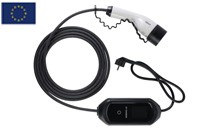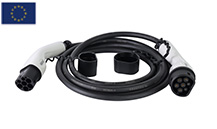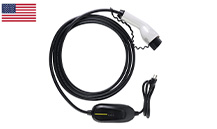In order to change the confusion of electric vehicle charging interfaces, the eight major American and German manufacturers Ford, GM, Chrysler, Audi, BMW, Mercedes-Benz, Volkswagen and Porsche jointly released the CCS combined charging standard in 2012.
CCS is the abbreviation of Combined Charging System, which refers to the combined charging system that combines the global AC charging AC and DC charging DC interfaces into one to achieve fast charging, while solving the problem of incompatibility between different vehicles. CCS is compatible with four charging modes including AC charging post: single-phase AC charging, fast three-phase AC charging, home DC charging and public charging station super-speed DC charging.
CCS is a common charging standard for new energy vehicles in Europe and the United States, and is subdivided into CCS1 and CCS2, with the American standard being CCS1 and the European standard being CCS2. L1, L2, L3 represent the three fire wires. The European standard supports three-phase AC charging, while the American standard can only support single-phase charging, so CCS2 has three fire wires, while CCS1 has only one.
CCS1: The non-vehicle charging device continuously monitors the connection status of the charging plug and socket by connecting the input voltage signal of the confirmation contact during charging. Once an abnormality occurs, the non-vehicle charging device immediately shuts off the dc power output and switches S1 off after unloading.
CCS2: During charging, if the non-vehicle charging device does not receive periodic charge level demand information from the battery management system within 100 milliseconds, the non-vehicle charging device responds by turning off the dc power output function.
Although the overall mechanical performance and electrical characteristics of CCS vehicle charging ports and connectors are largely standardized, the design of their protection levels is worth noting.
The first number of IP protection level represents the level of dust and foreign object intrusion; the second number represents the degree of sealing of the appliance against moisture and water intrusion, the larger the number represents the higher the level of protection. ccs connectors require water and dust protection, no protective features of ccs contact with liquids in the outside environment is vulnerable to damage. ip54, ip55, ip65 rating is the ccs plug cover on or common ratings when inserted. Compared with IP54 devices, IP65 is more waterproof and the same level of waterproof as IP55 devices; IP54 and IP55 devices are less dustproof compared to IP65 devices.
Traditional slow charging can no longer meet the charging needs of electric vehicles, electric vehicles need higher power DC fast charging, fast replenishment is the need for long-distance driving of electric vehicles, but also the general trend. FAFA-E connector technology is widely used in mode 2 portable chargers, mode 3 charging piles, liquid-cooled charging piles, we provide a safer, more efficient and intelligent charging method, providing operators and individuals a faster and more convenient charging solution.






 简体中文
简体中文
